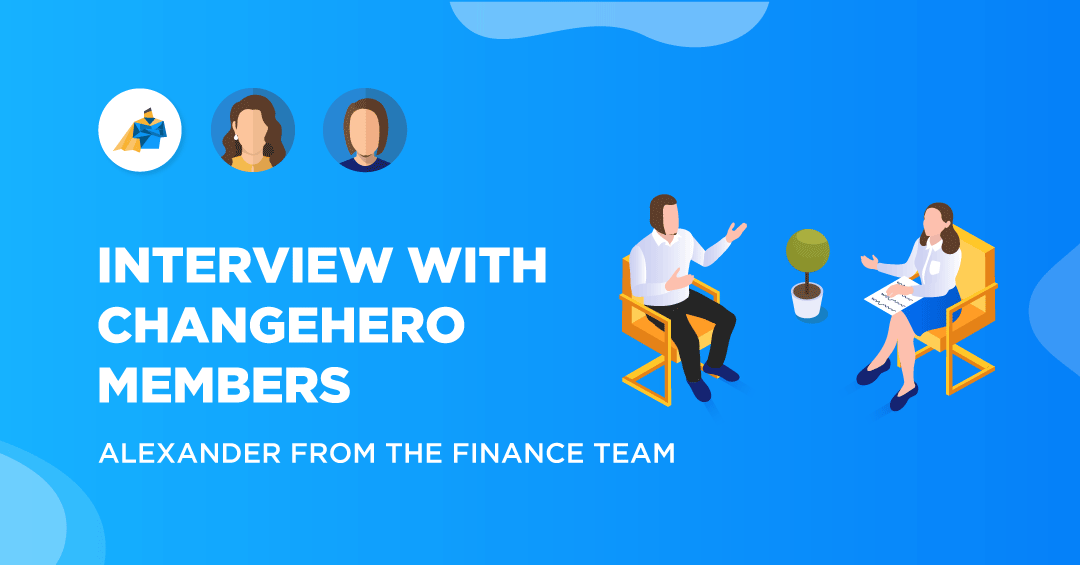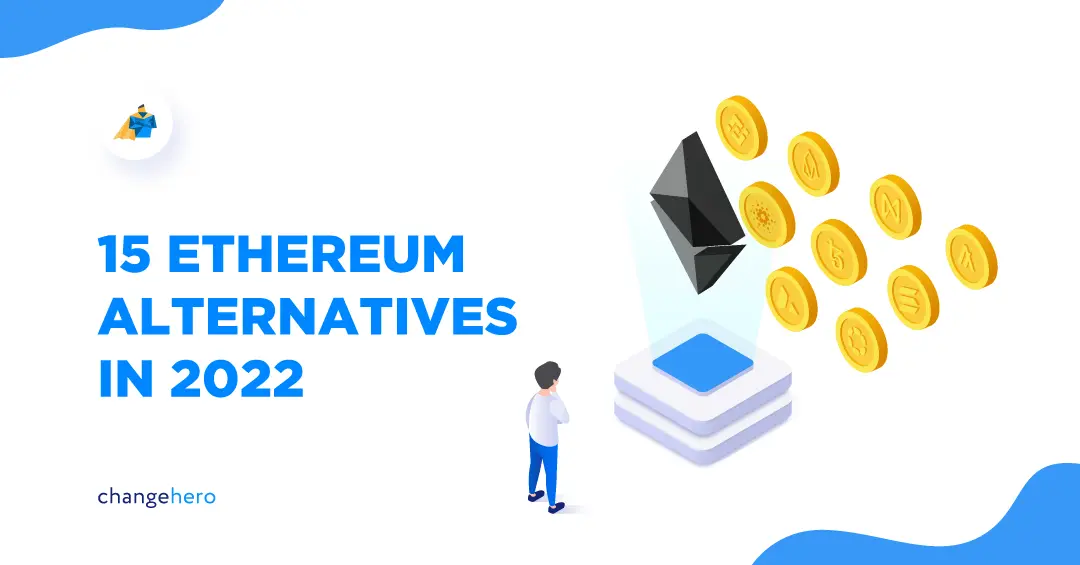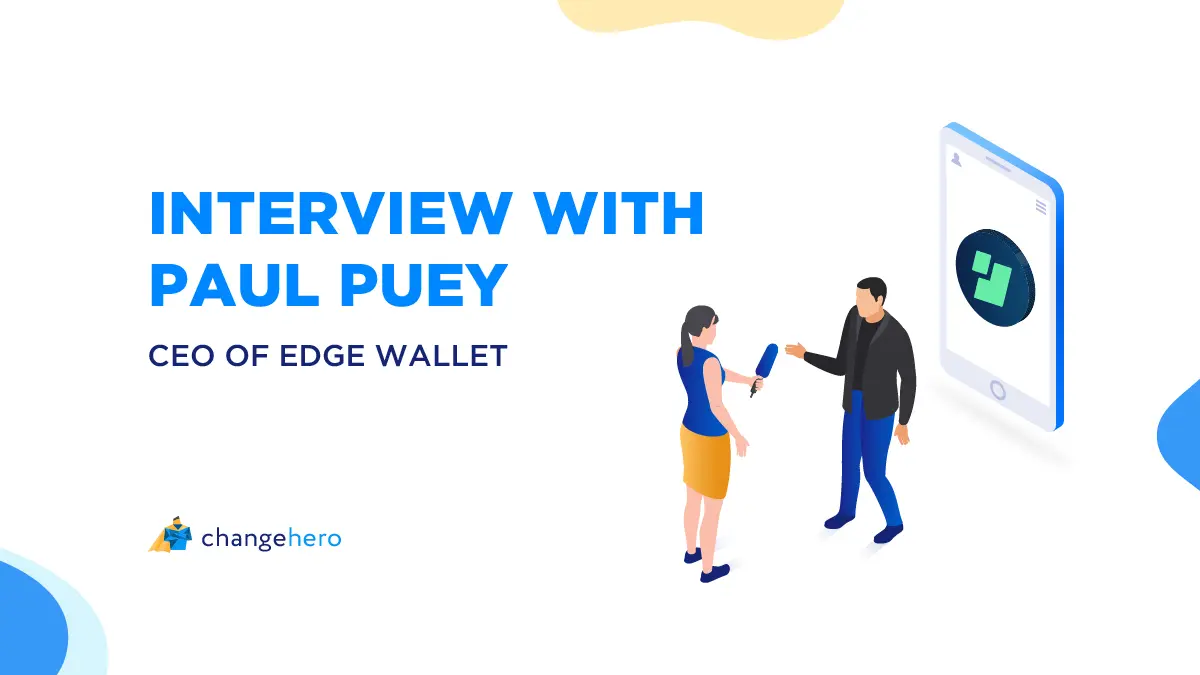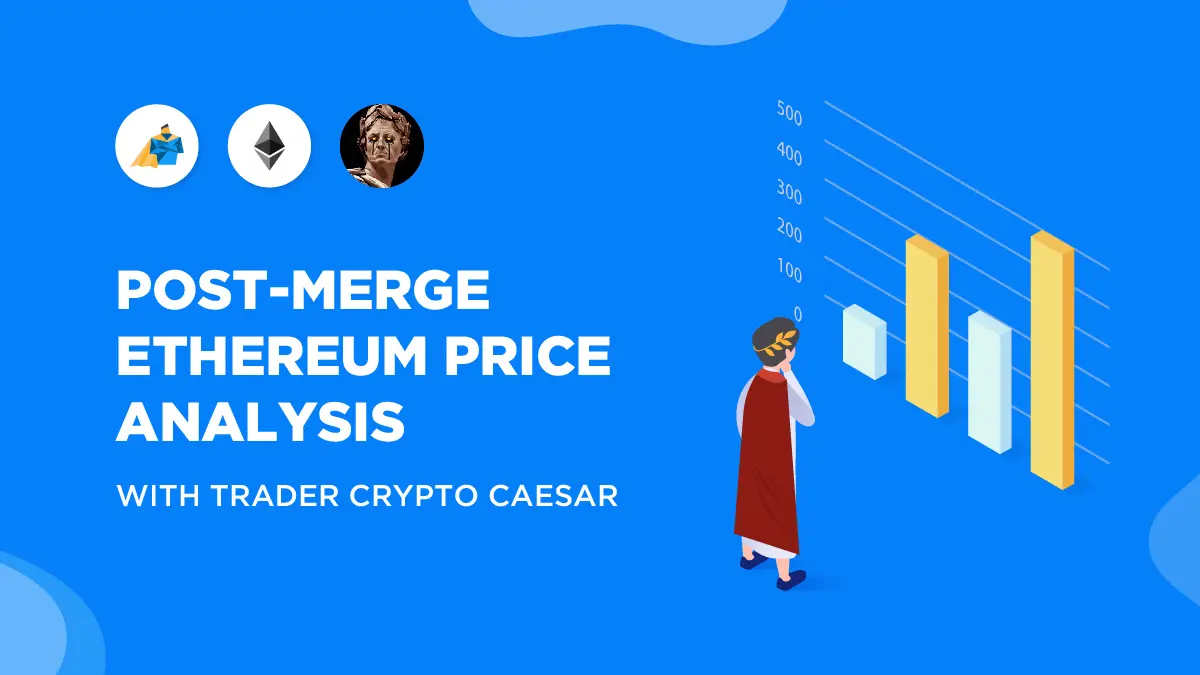
Contents
It is not typical for crypto projects to have a single person representing them. Ravencoin is just the case, best seen as a diverse community, but Tron Black comes pretty close to being a rep. In the community, he is known for his contributions to coding and educating about Ravencoin. We had the opportunity to interview him about the origins and prospects of the project and crypto in general. From what he shared with us, everyone, newcomers and longtime enthusiasts will certainly learn something new. What are you waiting for, get comfy and dive in!
ChangeHero: Let’s start with the Off Chain 2019 event. We heard that you made a dramatic entrance with a crow mask and Onewheel? What was it all about?
Tron Black: It’s a Raven mask. Actually it is a plague doctor’s mask, but it looks like a Raven. At the Peace Coliseum in Utah, I once made an entrance to a Ravencoin meetup, and it was a hit, so I’ve ridden it several times now before my talks in Utah and Las Vegas. Sometimes I’ll put a Guy Fawkes mask underneath the Raven mask, but the eye holes of the two masks don’t line up well, so I’m OneWheeling blind.
Back to the beginnings
ChangeHero: When did you start to code? In your opinion, what was your first achievement in developing software?
Tron Black: I was “coding” when I was 12 years old by typing in codes from a magazine into an Atari 800. The first significant program I wrote was software to manage video rentals in BASIC. But I was too young to drive, so I didn’t end up selling the software. In retrospect, I should’ve enlisted help, because that was a huge market.
ChangeHero: How did you get into the crypto and what was your first project?
Tron Black: I probably heard about Bitcoin earlier, but the “mining” term led me to believe the computer was crunching numbers to “find” Bitcoin, and that didn’t appeal to me. It wasn’t until later when it was proposed as a solution to the Cyprus bank failure that I looked at it again and then went down the proverbial rabbit hole.
The first project was Verified Wallet and it was a way to build trust for a crypto address. I had identified that Bitcoin flipped the trust model. If you send money with Visa, and don’t get the goods, then Visa can reverse the charge. If you send money via Bitcoin and don’t get the goods, then you’re out-of-luck. This meant that you had to trust the crypto address to which you’re sending BTC. Verified Wallet was a way to build that trust. Think of it as Verisign [domain name registry provider — CH] meets eBay ratings. This project was derailed by some bad ideas that were floated about verifying all addresses, and I realized that my message of trust probably would get confused with this other idea of DOXing all addresses.
ChangeHero: Did you contribute to Bitcoin? If yes, in what way?
Tron Black: Not code. I contributed by mining, holding, spending (on pizza).
About Ravencoin
ChangeHero: It’s unclear who started Ravencoin. Could you give us some details about it and was there any story behind this development? When did you join Ravencoin?
Tron Black: The original idea and imagery was from Bruce Fenton. Bruce and Patrick Byrne connected and Patrick offered some of Medici Ventures’ development for the project. I was lucky enough to hear about the idea early on and was able to lead a team of developers to get the first version launched – on Bitcoin’s 9th birthday.
ChangeHero: Could you tell us what it was like on the day of the mainnet release?
Tron Black: There was a shared goal to have a fair launch. Bruce announced it via Twitter, and Overstock employees were allowed to mine. We were careful to make sure that the seed-nodes were not mining as they needed to be in place so the nodes could connect together. Earlier that day (January 3, 2018), I was able to find an article that talked about Bitcoin from the same publication Bitcoin found its genesis text. Ravencoin used “The Times 03/Jan/2018 Bitcoin is name of the game for new generation of firms” The reason it is important to have a current article in the genesis block is that it proves that there wasn’t pre-mining being done before launch. Once the genesis block was created, Ravencoin had to be compiled, and released. Once the seed nodes were deployed, the mining could begin. I was too busy coordinating, so I didn’t mine the first blocks. It was stressful. We had run tests before, and run testnet mining to make sure it all worked, but going live was still nerve racking.
ChangeHero: In what case Ravencoin is better than Bitcoin?
Tron Black: Ok, I’m probably going to get myself in trouble on this question. Let’s start with the obvious. You can create and trade assets on it. That was part of the original vision, even though it didn’t have that capability upon launch. The asset layer was added later (Nov 5, 2018), but the plan was always to put in features like those in Open Assets, CounterParty, and Mastercoin. We knew that we could make the experience better because those protocols rode on top of BTC, and since BTC was unaware of them, there was only so much they could do to make a smooth and seamless experience. Notably, on those other protocols some BTC needed to be transferred with asset transactions so that BTC would allow the transactions.
I am a fan of Bitcoin, but I believe the crypto ecosystem would not be as strong with just Bitcoin. These other projects not only allow for exploration, but they also make Bitcoin stronger because the extended ecosystem provides multiple on and off-ramps and exit strategies for Bitcoin holders.
ChangeHero: Could you tell us how Ravencoin assets differ from Ethereum assets?
Tron Black: Ravencoin assets have a similar capability to ERC-20. You can create transferrable tokens, determine their divisibility, and choose the quantity. That’s where they are the same. Where they differ is that Ravencoin assets get a unique name. This helps with branding, and helps prevent fraud and spoofing that is easier on ERC-20 when the identifier is a 40 character hex string.
Ravencoin assets also use the UTXO model - like Bitcoin. So you can trace all assets back to issuance. Whereas ERC-20 just adds and subtracts from an account via the smart contract.
At the time of this writing, it is much cheaper to transfer assets on the Ravencoin blockchain than it is to transfer ERC-20 on the Ethereum blockchain. It is thousands of times cheaper, and that can be important for some projects.
ChangeHero: In July 2020, there was an attack on Ravencoin. Could you tell us a bit about it and how the team handled it?
Tron Black: There have been two vulnerabilities discovered in Ravencoin. One that allowed extra RVN to be created, and another that allowed asset counterfeiting by exploiting the block reward transaction that was used only once. Both of these were fixed quickly, once discovered, but it required getting the updated code to all the miners, and that was not easy because of the decentralized nature of the project. We don’t know who all the miners, and mining pools are. So we relied on a combination of emailing the ones we did know, along with messages to Discord, Telegram, Twitter, etc. It turned out ok, but Ravencoin took a reputational blow. The community has rallied and funded a code security audit that is ongoing right now. The results of that should be available for publishing by the end of the month, or early next month.
Community and adoption
ChangeHero: Ravencoin is an open-source and a community-driven blockchain. What do you think keeps the volunteers motivated?
Tron Black: The community has been the most amazing part of this project. There are lots of volunteers to moderate, help new users, run the Discord and Telegram, contribute code, write stories, make videos, etc. It is inspiring.
ChangeHero: What were your expectations at the beginning, did you imagine there would be good community support?
Tron Black: Ravencoin has exceeded my expectations. Especially the community. There are so many me-too coins out there that just copy a successful project and don’t add anything. Literally, there are thousands of projects, and some of them are well funded. Oftentimes, the funds came from a pre-mine where the creators either bake some rewards for themselves into the code, or they mine for days, weeks, or months before they make the project public. Even with the extra funds available to them, it’s understandable that these projects whither because who wants to help a project where it was built just for the enrichment of the creators.
ChangeHero: Ravencoin is focused on the assets and businesses can make use of this. How is the team working towards this?
Tron Black: RVN works like BTC, so it can be used in the same way, but with lower fees. That’s a given. It can hold and transfer value. There are 50+ exchanges where you can trade RVN.
But the features that make it unique are its asset platform features. I could talk for hours, or days, about its unique capabilities, but here’s the short version. You can create your own assets, sub-assets, unique assets, or restricted assets. Each of these has a unique name. Once you create your asset and claim the name, then nobody else can claim it. If you create an asset, and then want to create more, you can create sub-assets under your asset. Then you can choose any name you’d like. Example: ART/PAINTINGS If you have the ART asset, you can create any sub-asset under it.
You can also create unique asset, like ART#Mona_Lisa. There can only be one because of the # in the name. Ravencoin will guarantee that for you.
Restricted Assets let you restrict trading if you are the issuer. This is helpful in some regulated arenas, and can be used for Security Tokens. These always start with $ so they can be easily distinguished from the other assets that can’t be restricted.
ChangeHero: There’s no “Ravencoin Foundation” or any organization supporting the development. Can we expect to see such in future? Also, could you give us some details about the Medici’s contribution?
Tron Black: This is changing. A Ravencoin Foundation is being created. It doesn’t own Ravencoin since Ravencoin is just open-source software and a matching protocol that anyone can use. The foundation can help support Ravencoin and can help others that want to use the Ravencoin platform for their own projects.
Rapid Round - Pick one or you can also break the rules :)
ChangeHero: Coding or Business Development?
Tron Black: Coding, then Business Development. I’ve been involved in projects that had the best technology and no customers, and that’s no fun. I’ve also seen lots of projects that are all hype and no substance – I stay far away from these. I think Ravencoin has hit a point where it is mature enough and has a strong set of unique features so it needs more exposure and usage.
As it gets used more, we will collectively build more open-source tools, wallets, APIs, bridges to make it all work. The foundation is strong, now we build solutions on top.
ChangeHero: Trading or Mining?
Tron Black: Both. Mining is how Ravencoin is secured, but it is also how it comes into existence. This is needed. Next year is the first halvening event. This means that 2021 could be the cheapest year for RVN. Supply rates will halve for 2022 and beyond.
Trading is how the value of Ravencoin is set. But for all crypto-currencies it is also important to have lots of trading. Lots of trading makes RVN very liquid. Every day, millions of dollars of RVN change hands. This means you can easily buy or sell without significantly moving the RVN price. Unless you’re Michael Saylor, or Grayscale.
ChangeHero: Vitalik or Charlie Lee?
Tron Black: Can I say “both” again?
I really respect the brilliance of Vitalik Buterin. I sometimes give him grief when I’m comparing the superiority of Ravencoin assets to ERC-20 tokens, but in fairness, ERC-20 isn’t his, it’s just a template contract on top of a brilliant idea of having a turing-complete smart contract language operating on decentralized nodes.
If I have to pick only one, I’d pick Charlie Lee. I’ve met Charlie two times. Once in line registering as a speaker for a crypto conference in Las Vegas. And again, at a private dinner with former presidential candidate Ron Paul. I’ve worked with Charlie’s brother Bobby on the Ravencoin version of the Ballet wallet for safely cold storing Ravencoin.
About the future
ChangeHero: Where do you see crypto heading? Do you think we will reach the mass adoption dream?
Tron Black: Crypto, or more specifically, the ability to transfer value on a decentralized ledger is going to change the world. Right now, it is like asking “Where do you see the internet heading?” in 1996. This is the very beginning.
I have been lucky enough to participate in the computer revolution, the internet revolution, and now the “internet of value” revolution which we call “crypto”. They feel similar. I received an Atari 800 for Christmas as a kid, before IBM entered the PC market. I learned to program as a kid. I wrote software that demonstrated municipal waste water cleaning equipment for EIMCO, the company that my dad worked for. I became President of my first company at 18. It turns out you can start your own company and become President for just $50. I did e-commerce before Amazon. I founded and sold an Internet utilities company just about the time Netscape went public. And now I’m participating in the biggest financial innovation in 100 years.
ChangeHero: What do you think about the regulations of crypto? Will they act as a barrier or help the community?
Tron Black: Some regulation is probably good if it allows big participants to feel comfortable coming into the space. Crypto itself doesn’t care about the regulations because it is just software running everywhere.
Some regulation that I’ve heard proposed shows just how little some regulators understand about the technology.
Some regulation is likely to hurt the jurisdiction where the regulation applies. Imagine if a country regulated the internet so much that those citizens didn’t get to benefit from all the opportunities it brought. Transitions are scary for the people in power, so I’d expect some bad regulations here and there. Hopefully, less here.
ChangeHero: Any plans to increase the block size? Can we expect any significant updates to the platform?
Tron Black: The block size is 2x Bitcoin’s size. The block speed is 10x, so there is 20x Bitcoin’s capacity. Right now that seems like plenty, but let’s monitor it.
The Ravencoin platform has lots of features, and if you put them together right, it can already enable amazing things that aren’t being done yet. I think it’s time to focus on security and letting people know what’s possible. It’s also time to connect Ravencoin to other cross-chain projects with AtomicDEX, renRVN, etc.
ChangeHero: We are aware that you are a serial entrepreneur. What kind of business opportunities do you see in crypto?
Tron Black: Crypto has been different from the internet revolution. Even in 2013, I realized that the middle-man model that most internet companies rely on doesn’t work for a decentralized crypto project. The value accrues to the platform token holders. In this case, to the RVN holders. Peer-to-peer doesn’t have middle-men. That sucks for middle-men.
ChangeHero: Finally, what are your suggestions for a beginner in crypto? Would you recommend mining RVN?
Tron Black: Experiment, play, try things. The best technologists have curious minds.
I’m excited for Ravencoin, and Ravencoin assets, but I’m also excited about DeFi, Bitcoin, Dash, DEXes, cross-chain swaps, CBDC, stable coins, decentralized swap contracts, interest bearing crypto accounts, STOs, gamified mining, blockchain voting, and all the new innovative crypto projects that are being created today.
I recommend mining, holding, and playing with RVN, and with Ravencoin assets. Jumping in with Ravencoin is a very low risk way of learning about the technology.
That’s a wrap — huge props to Tron Black for the insightful interview! Ravencoin community is sure extremely lucky to have such a contributor.
If you enjoyed this interview, why not check out our blog for more? All the updates are shared in our social media: Twitter, Facebook, and Telegram, so give us a follow to keep track of informative and educational content about all things crypto and blockchain!






